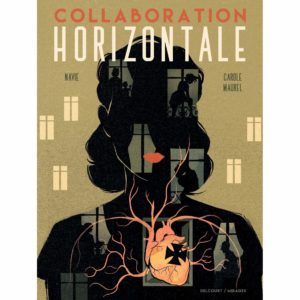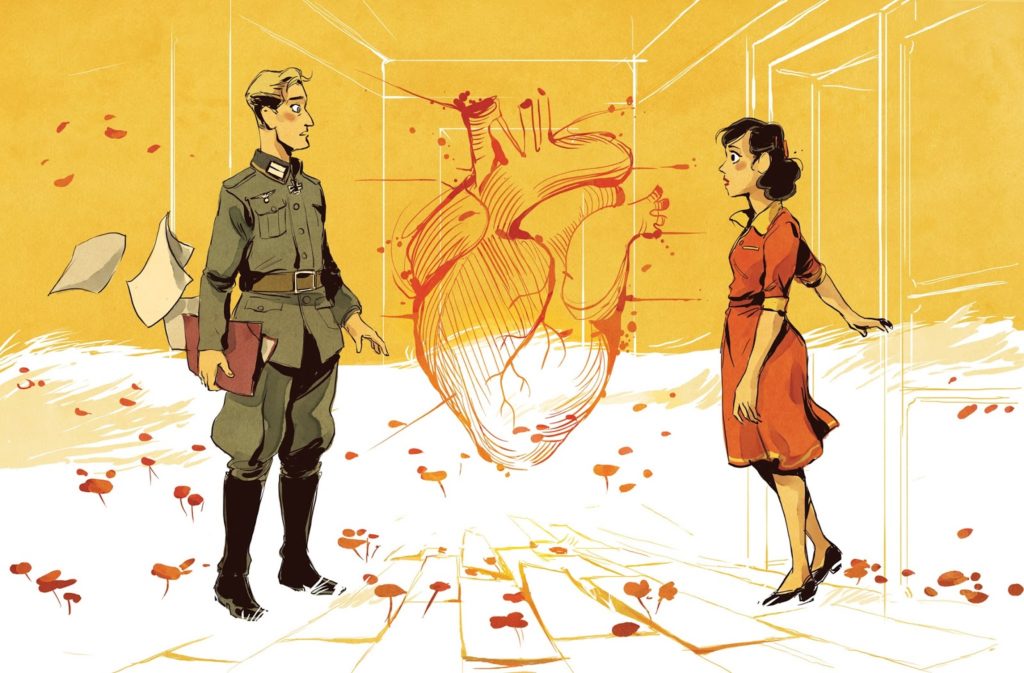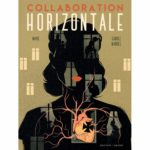Title: Horizontal Collaboration
Author: Navie
Illustrator: Carole Maurel
Publisher: Korero Press
English Translation: Margaret Morrison
War doesn’t just change the fortunes of nations; it tends to have devastating effects on individual lives that fail to find mention when large histories are being written. When I picked up Navie and Carole Maurel’s French graphic novel Collaboration Horizontale (translated into English by Margaret Morrison as Horizontal Collaboration), I had no idea of the term’s existence. Apparently, it referred to romantic — and forbidden — relationships between French women and German troops during World War II.
The women left behind after Hitler’s embarrassing fall were punished for what was perceived by their countrymen as acts of treason, but, as this book depicts so eloquently, concepts like treason start to occupy gray areas during times of social and moral uncertainty.

There are a number of characters here, all living in a faded corner of Paris, each with a tale to tell. The women have their individual burdens to bear, hiding secrets that involve prostitution, poverty, abusive husbands, and unrequited love. At the center of this daily flurry of activity is a young nurse called Rose, whose husband is a prisoner of war, who happens to fall in love with a young German officer called Mark. Does this make her a collaborator? Should she be allowed to have feelings she has never had for her husband?
The stories of these women and men intersect in all kinds of ways, revealing their insecurities, petty rivalries, and hidden desires. There are hints of larger forces at work — in, for instance, a Jewish family being forced to hide away for reasons well known to us — but the atrocities of war are not the focus here. What Mark and Rose are both doing is sleeping with the enemy. She represents a force that ruined his past, and he, one that has destroyed her present. And yet, neither can stay away. The affair affects those around them too, changing them in ways they have little control over.
What gives these intertwining tales their power is how they make a reader re-evaluate the notion of love as well as betrayal, repeatedly making the point that circumstances beyond our control can often alter beliefs and shake the sturdiest foundations.

This isn’t a flawless book. It is sometimes hard to keep track of what minor characters are doing because they crop up at unexpected moments and hinder the movement of protagonists with larger roles. There are also some who promise to be pivots on which the central tale turns but end up being mere ornamentation.
What undeniably brings the story of Rose and Mark to life is Maurel’s art. Awash in sepia tones of Europe’s past, she brings that era to vivid life. There are symbols everywhere, with even the human heart becoming a character and managing to say more than words can. There is also much wisdom on display in the use of colors like black that fade in and out to convey powerful subliminal messages.
The story of Mark and Rose becomes a microcosm of how so much is swept under the rug when nations go to war. It is also a reminder that love can sometimes be an act of resistance — one we have no power to fight because it is this weakness that makes us human.




